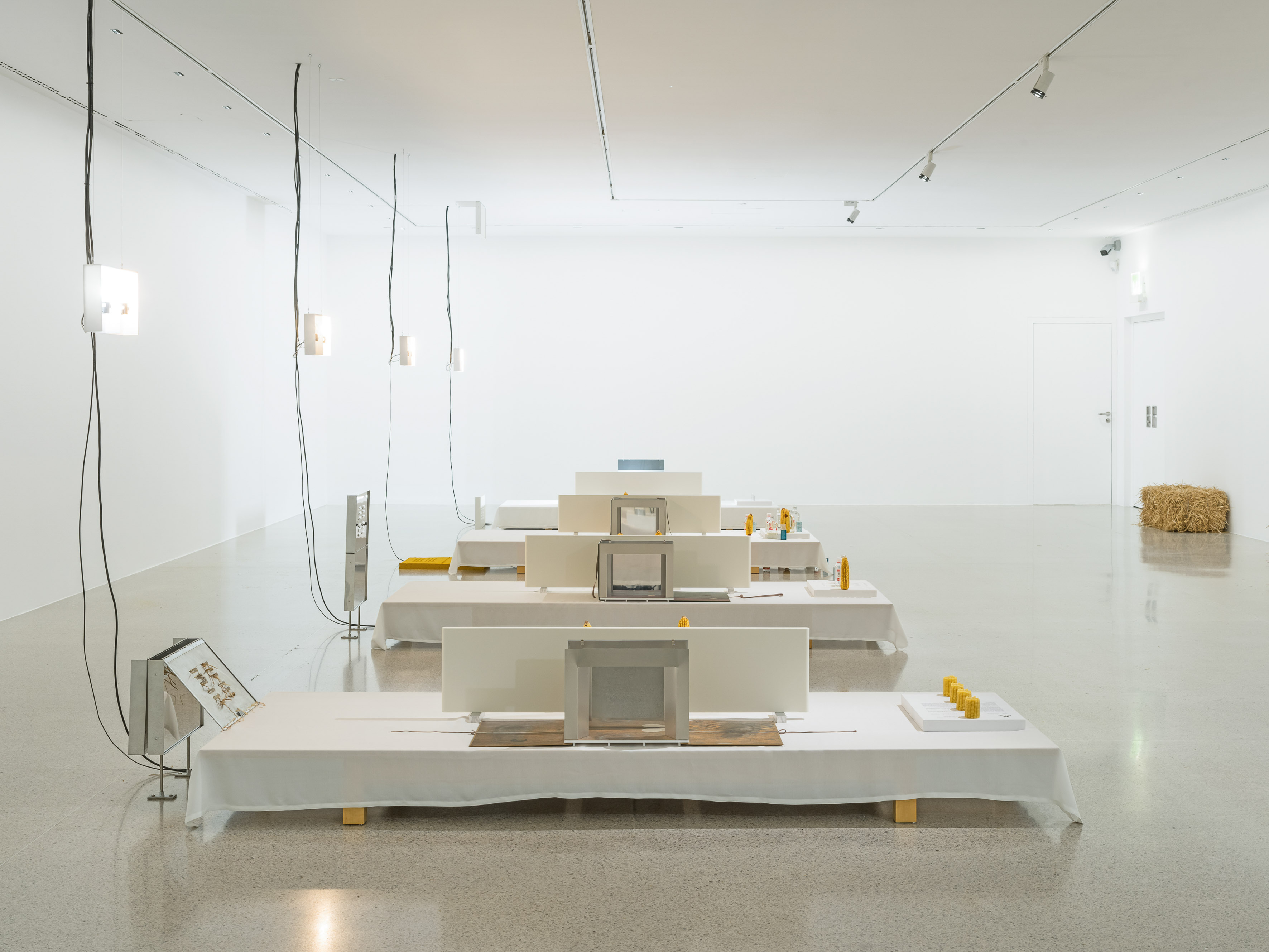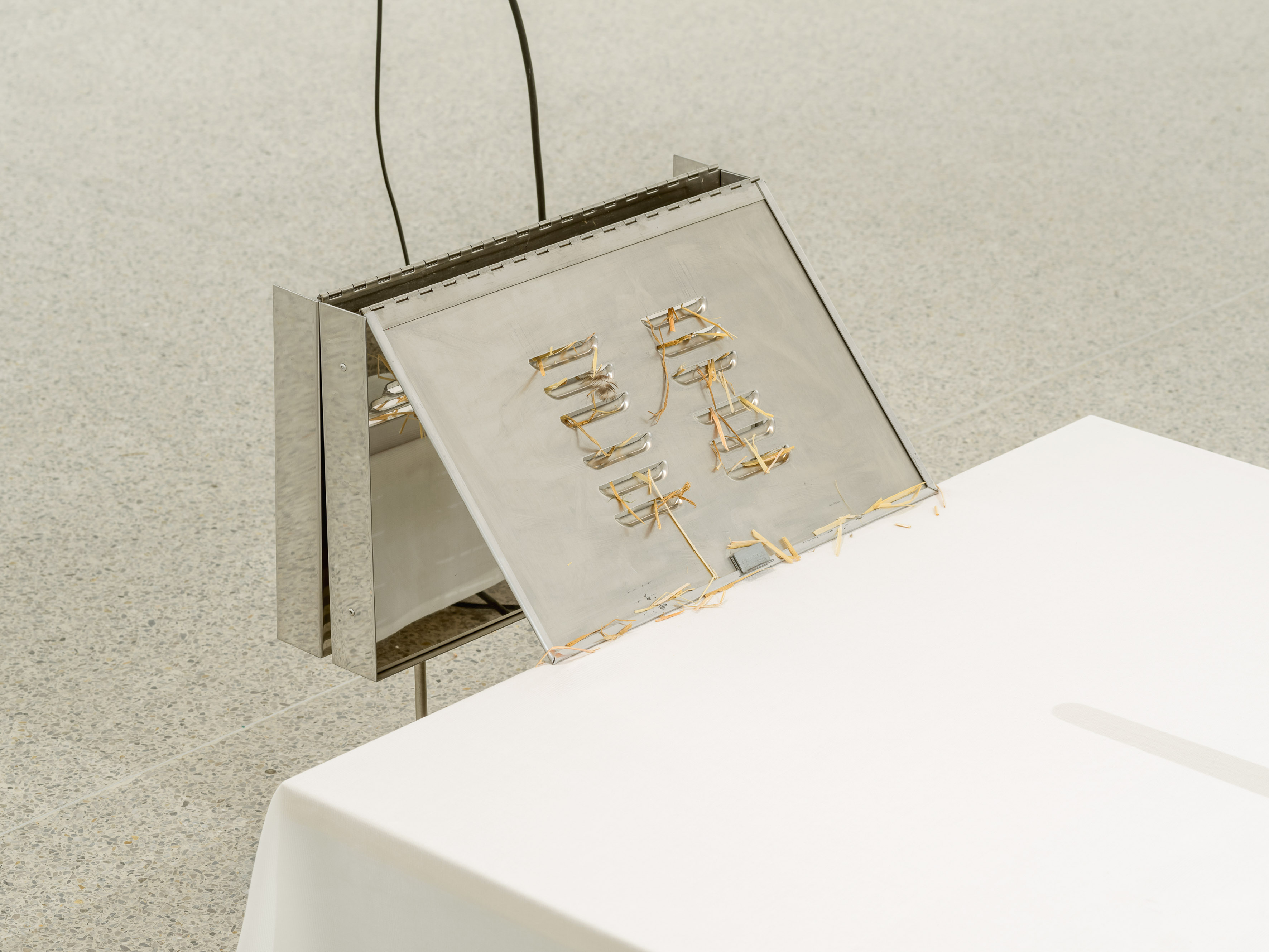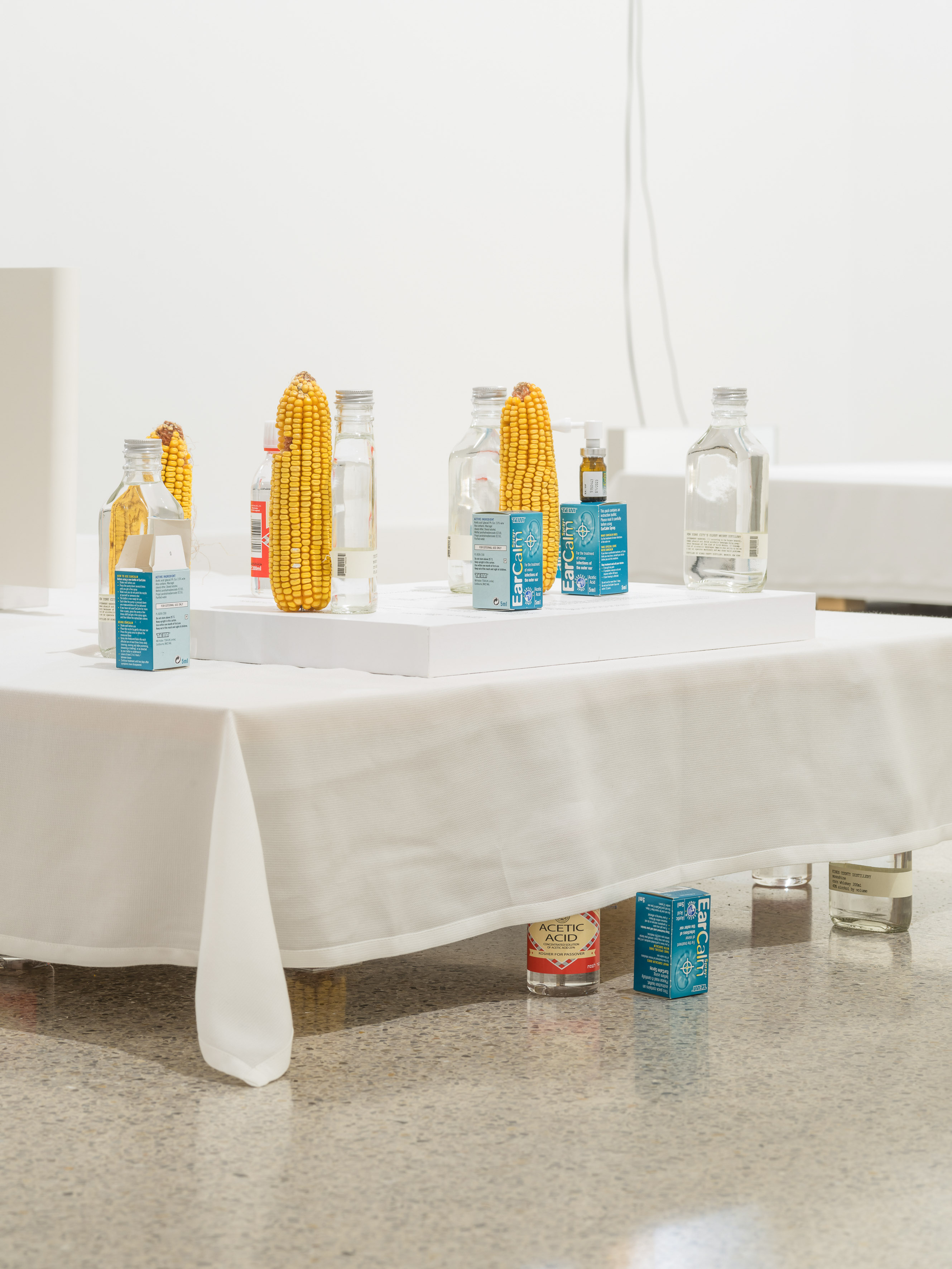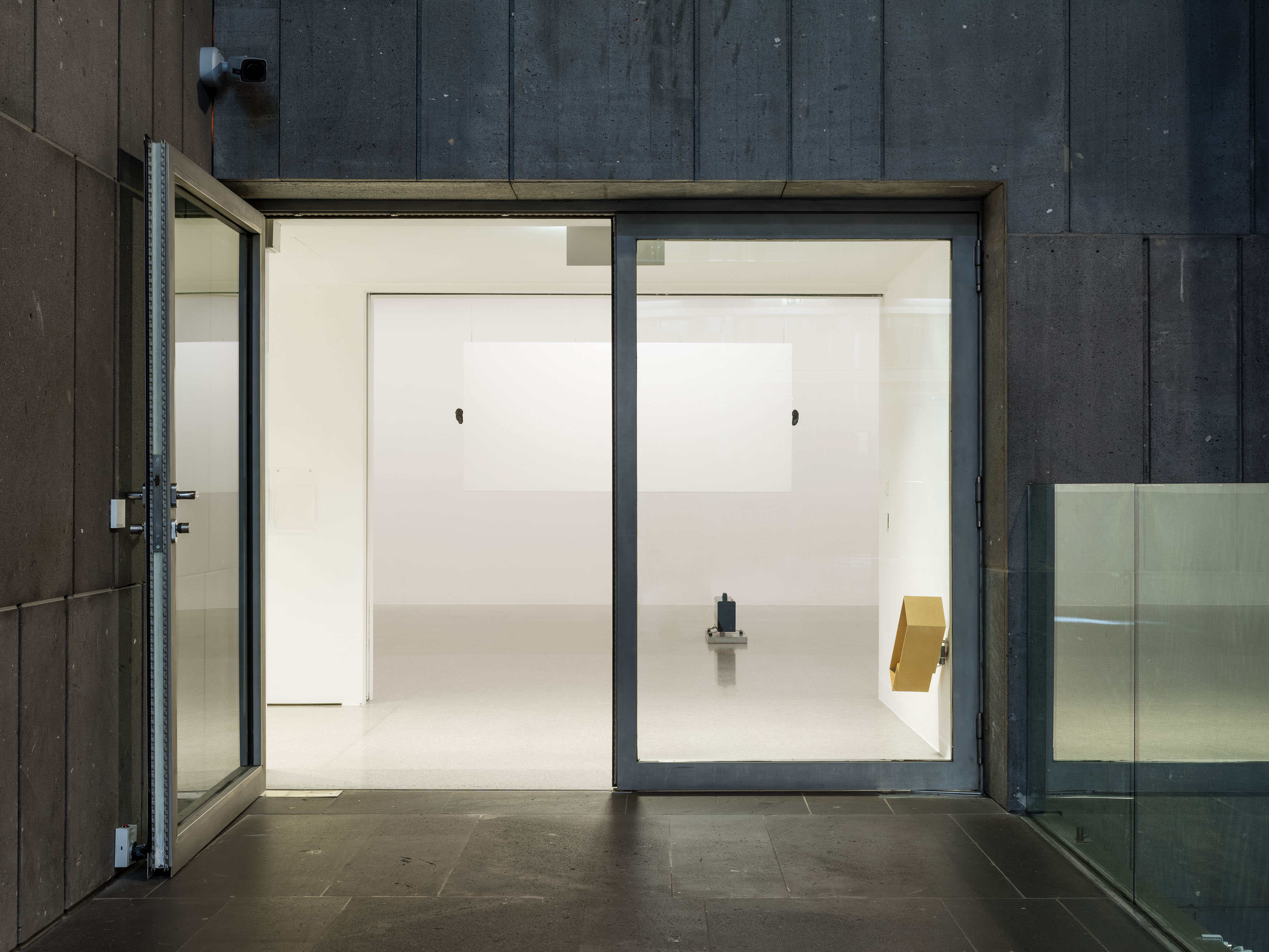YYYYMMDD >>> BACK HOME <<< >>> SELECTED FEATURES <<< >>> HIDDEN ARCHIVE <<<
[20220627]
TERMINAL by JESSE STECKLOW at MUMOK curated by MARIANNE DOBNER [from 20220520 to 20220925]
[Photos: Klaus Pichler / © mumok]











Jesse Stecklow’s artistic practice builds upon the collection, analysis, and circulation of ecological data that is typically invisible to the human eye. From May 2022, mumok presents his first solo exhibition in a European museum entitled Terminal.
The Los Angeles-based artist works with a clearly defined repertoire of objects, which oscillate between text, image, and sound. His sculptures enter into a direct dialogue with their surroundings and virtually merge with them. For Stecklow, it has less to do with the objects as such than the diverse narratives generated by site- specific shifts in context. He refers to his objects as characters, which play different roles depending on the situation and take on multiple identities in the form of disparate iterations.
Today, when we speak of “data,” what comes to mind are primarily digital collections of information – an abridgement that Stecklow overrides by taking a significantly broader and foundational stance toward the term: “I like to consider technology with a really broad view; like a knife as a technology for cutting. In that sense, I take a zoomed-out idea of data, as I’m not only interested in using new modes of collecting information but also concerned with how those systems might apply when referred back to the larger realm of materials and structures. [...] Data could manifest as the spores of a mushroom or glue-trapped insects or any kind of material that was leaving an informational trace, like a sort of drawing. It’s important for me to keep the term ‘data’ open. It has been sequestered to a tech area that I feel is limiting. There’s something intimate and specific about concerning oneself with the movement of airborne material through a room.”1
With the formulation of a “system of ecological data collection,” which has led to technically rudimentary works, such as Text Trap i (2016) with its use of fly tape, as well as highly tech savvy objects like the Air Sampler (since 2014), Stecklow sidesteps the apparent objectifying digital data craze of our age. He creates a loop in which the material data he collects – more precisely, their analysis – influences future iterations of his works and thereby forms the conceptual anchor point of his practice.
Stecklow began working with this process of circulating data in 2014 with a work group called Untitled (Air Sampler), which employs a method of collecting room air for microbiological analysis. Encased in a polished aluminum housing, the air sampler presents itself as a sculpture. Over the course of the exhibition, the air sampler acts as a custodian of sorts, registering all of the invisible environmental changes – in particular, changes that have been triggered by the presence of the visitors, who unknowingly contribute to later manifestations of the object and thereby become a significant part of the work. At the end of the exhibition, the recorded data in the air sampler is analyzed at a laboratory. The results, in turn, form the conceptual basis for the next version of the air sampler.
In his first solo exhibition in a European museum entitled Terminal, Stecklow transforms the exhibition space into a waiting room, thus making reference to the ongoing pandemic. The artist structures the perpetual reiterations of his formal repertoire – the representation of his objects in modified versions – with the aid of displays, which assume a hybrid form between baggage conveyor and dinner table. A decision that points out how the pandemic offset public and private space: while the once bustling airport terminals became emptier and emptier, the formerly lonesome dinner tables were overflowing and now also served as office and school desks.
The exhibition is accompanied by the release of Stecklow’s artist’s book with texts by Alex Bacon, Marianne Dobner and Lisa Long.
1 K.R.M. Mooney in conversation with Jesse Stecklow, “Something Adaptable,” Mousse 48, 224–230, here: 224.
Jesse Stecklow (born 1993 in Massachusetts, USA) studied at the University of California, Los Angeles. His recent solo exhibitions were presented in Bainbridge House of Princeton University Art Museum, Ditto at Sweetwater, Berlin, Staging Grounds at M+B, Los Angeles, Collection Sites at Chicken Coop Contemporary in Portland, Oregon, and The Multi-Directional Elevator at Chapter in New York. Additionally, his works have been featured in group exhibitions at Kunstverein Braunschweig, Fahrenheit in Los Angeles, Podium in Oslo, and the Luma Foundation in Zurich. In 2017 Stecklow was awarded the Louis Comfort Tiffany Foundation Grant. He lives and works in Los Angeles.
[Text: Marianne Dobner]
©YYYYMMDD All content and design by Daniela Grabosch + Ricardo Almeida Roque unless otherwise stated. Images, Videos and Texts can only be used under permission of the author(s).